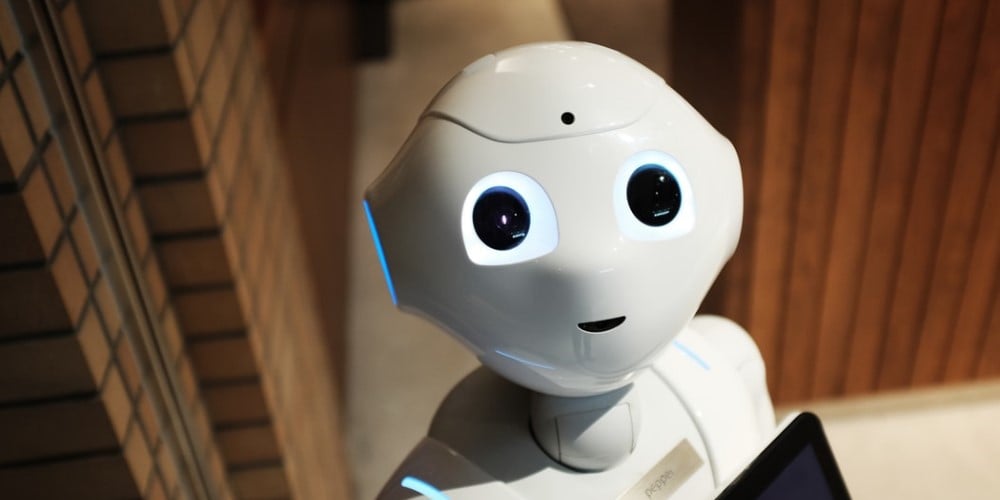Contents
'Humans vs. Robots,' 'Man vs. Machine,' 'People vs. Technology' - the debate has been around for years. Be it in movies or policy discussions, the possibility of technology replacing humans has been both celebrated and criticised. 🤖
With a technological revolution all around us, it’s hard to imagine teaching being an exception to this takeover. This article will explore what could happen in the world of teaching over the next couple of years.
Will technology replace teachers?
Over the past few years, scientists and experts have invested heavily in technology and robots that can help in improving children’s educational experiences. For example, robots have been used to aid students with personalised learning to learn at their own pace.
In China, hundreds of kindergarten classes are assisted by a small robot named Keeko. Keeko tutors the children individually by telling them stories, posing logical questions, and even reacting with facial expressions when the children learn the content. In Boston, teddy bear-sized robots are being used to teach children English.
Some specialised programs can even answer questions with more accuracy and efficiency than teachers do. In 2016, a Georgia Tech Professor used an artificial intelligence bot as an online teaching assistant. He only revealed the TA’s true identity to the students at the end of term. The students were very impressed and claimed they couldn't distinguish the bot from a real human. 😯
Situations like these suggest that robots might be more efficient than human teachers. They can tailor individual lessons for each student and are accessible to the largest of classes. With such rapid advancement, what are the chances of robots replacing teachers and teaching your children? Let's find out.
Teachers vs. technology
It can be scary to imagine a classroom filled with robots and children relying on these metallic teachers like magnets; however, this might not exactly be the case.
While it may seem that the development of technology has taken the educational system by storm, experts say that the possibility of robots replacing teachers isn’t that high.
There are many components that a human teacher brings to a classroom that a robot simply cannot. Here are two of the main reasons why robots will likely never replace teachers:
-
Reading social cues 👨🏫
A teacher's job is not just limited to teaching. While robots may be more efficient in helping children learn, they are incapable of reading social cues that take place within the classroom.
One of a teacher's primary roles is identifying difficulties students may be facing during a class. Robots can detect technical problems and act accordingly; however, they lack the ability to detect issues like speech difficulties or recognise emotions.
Teachers are important because children need someone to pay attention to their social cues and interact with them accordingly. Supporting a student requires a lot of empathy and understanding of human emotions, and robots aren't exactly designed to do that. Your child needs humans to relate to, and teachers are essential to support them throughout this process.
-
The ability to inspire 👩🏫
Teachers have the unique ability to inspire children to learn. Humans are social animals and inherently prefer to learn from other humans. Robots might be efficient in teaching facts, logic, and theories; however, they cannot practice skills like sharing and teaching from life experiences. Such unique human qualities are vital for growth and learning, and there's no way robots can replace these elements.
So, don't fret! Your children’s classrooms won't be resembling the scary sci-fi scenes depicted in futuristic, apocalyptic movies any time soon.
Teachers and technology
Robots and teachers don't necessarily have to be seen as one or the other. As mentioned above, robots are often designed and used to assist teachers in the learning process. This is another reason why robots won't replace teachers: they need to co-exist. 🤝
Wondering how this is possible? Well, here are some pointers to help you understand:
- Some tasks can be tedious and repetitive. A lot of a teacher's time is spent collecting homework, marking papers, and memorising content. These tasks can deter teachers from teaching effectively and efficiently. Robots can take over menial classroom tasks and save the teacher's time and energy. 👌
- Many students face difficulties in their education due to various physical and mental health conditions, such as ADHD or paralysis. With the help of AI and technologies like Virtual Reality and Individual Learning Tools, teachers can use robots to integrate such children into the classroom better. In addition, teachers can use AI to recognise students' potential disabilities in their classes before they even start teaching. This can help identify weaker students and give them the attention they may require.
Rather than being a threat to human teaching, the advancement in technology actually assists teachers in ensuring that their children get to learn best with the resources available to them.
Education isn't equal for everyone, but robots can help teachers lessen the gap. So, instead of worrying about robots taking over, try imagining technology and human teachers working together to help your children and give them the best learning experience.
This is exactly what we do at GoStudent. We leverage the power of technology to allow your child to learn in a healthy environment from some of the best teachers across the world. If you would like to give online tutoring a try, book a free trial session now.










